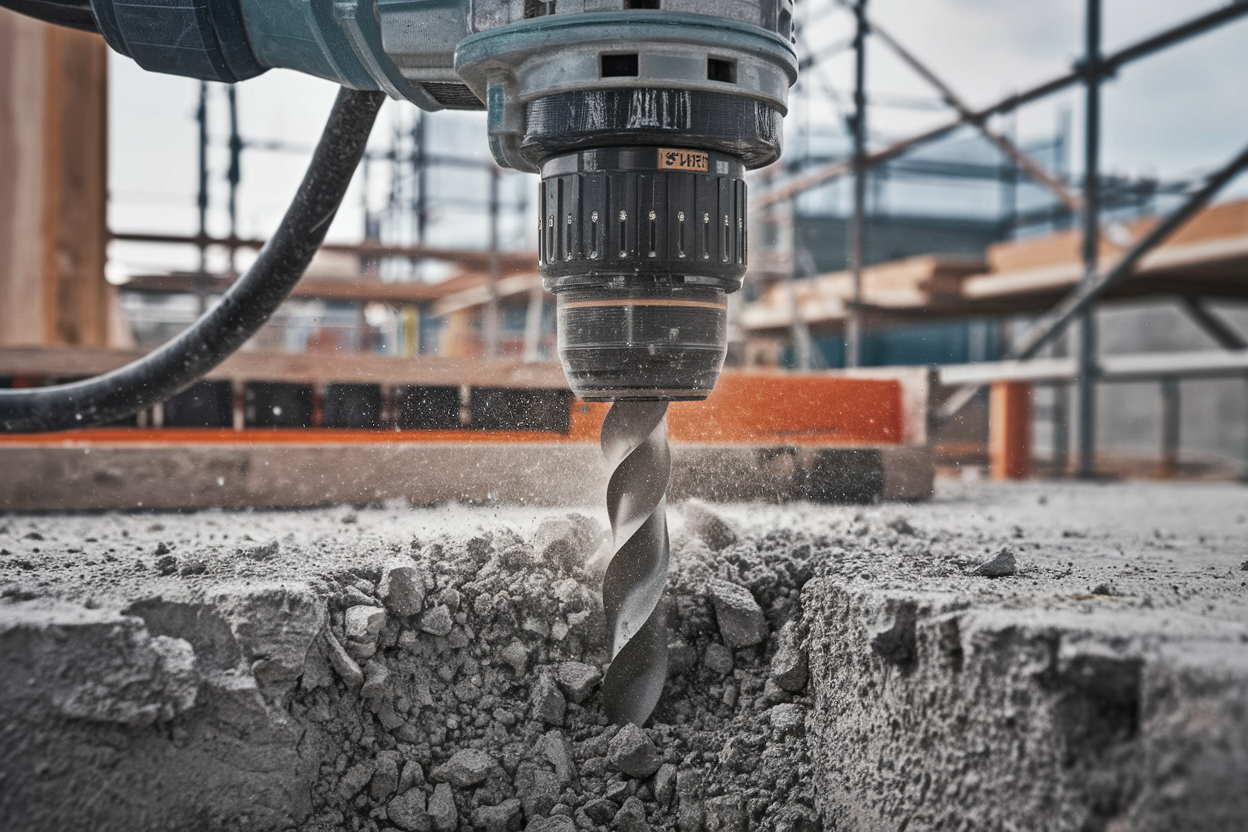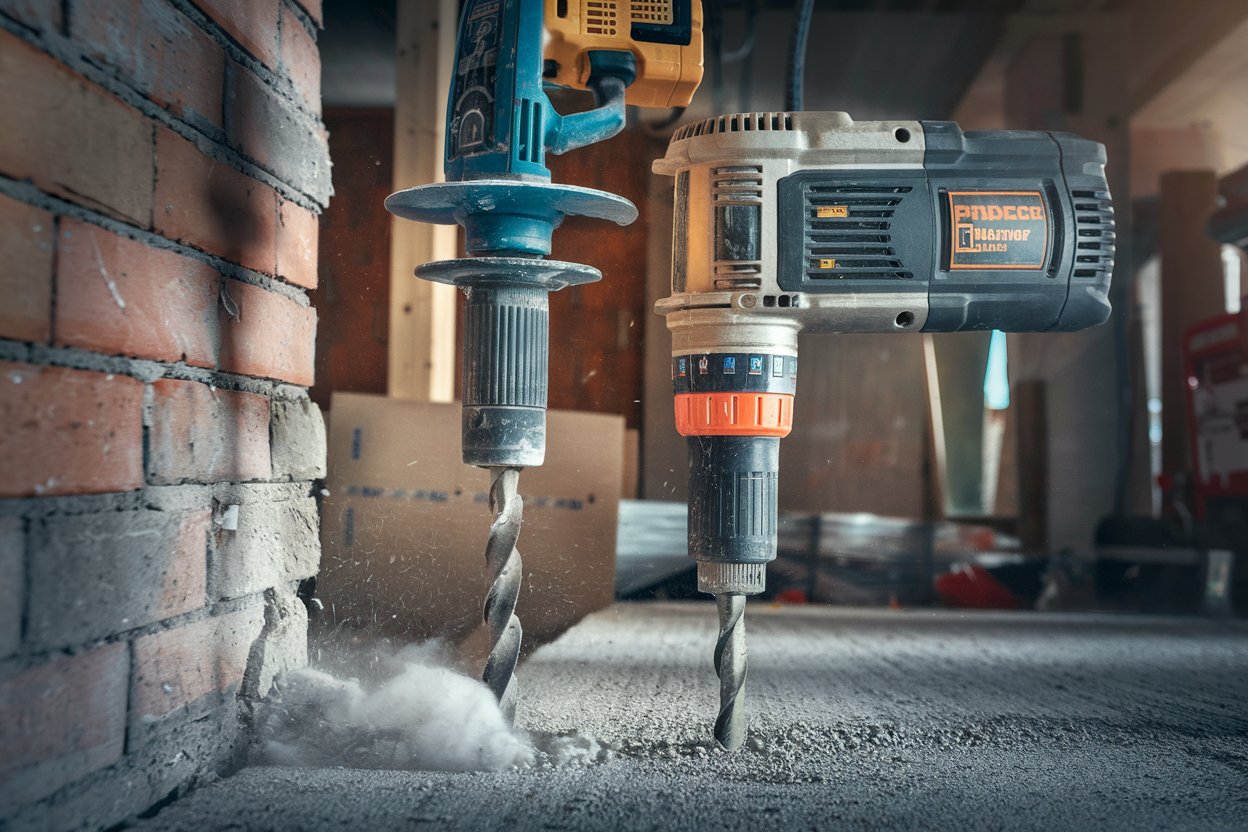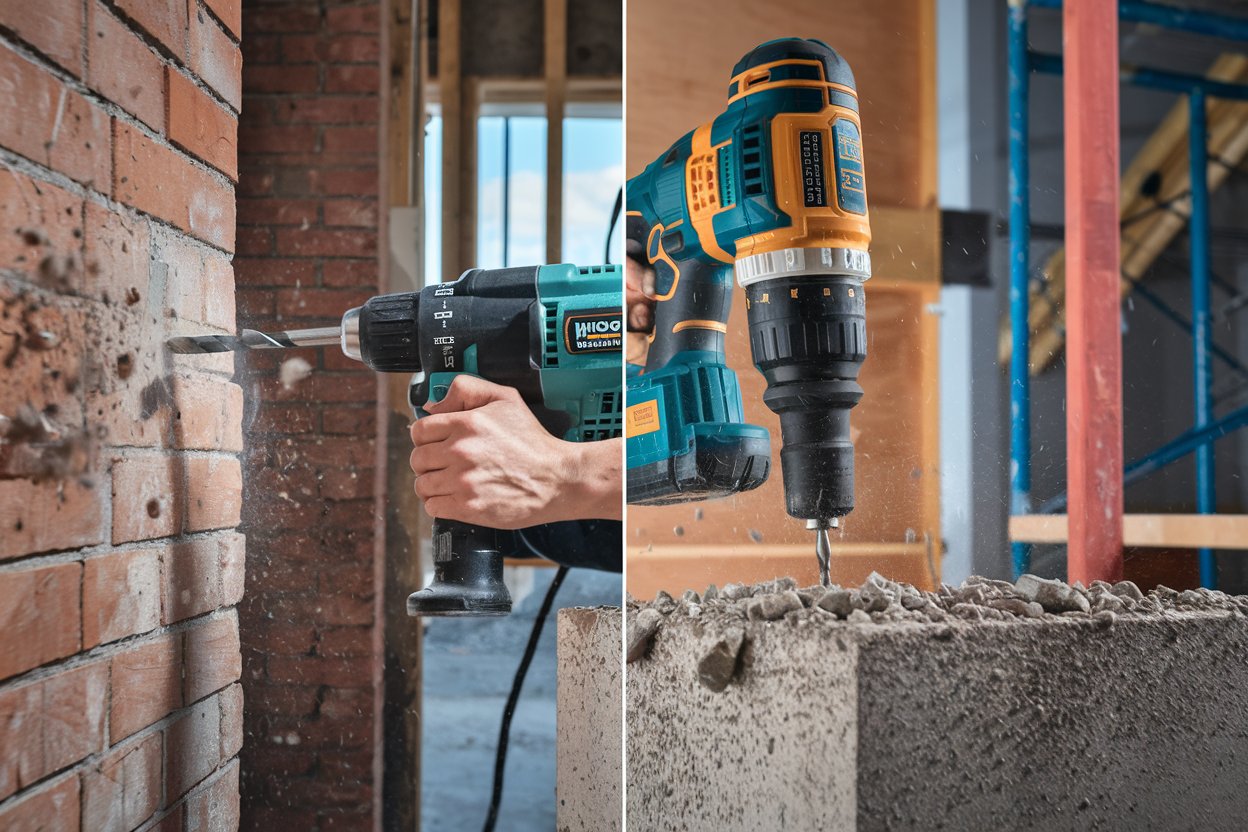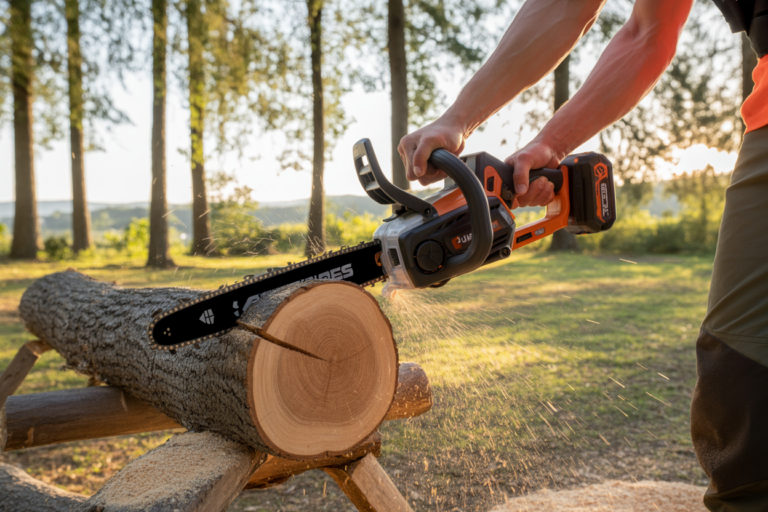
If you’ve ever tried drilling through concrete or brick, you know it’s no small feat. But what if I told you there’s a tool designed specifically for those tough tasks? That’s the power of the rotary hammer drill. It’s built to make heavy-duty drilling easier, faster, and more efficient.
Rotary hammer drills are perfect for heavy-duty tasks because they combine the power of a hammer and a drill. The strong impact and rotation allow you to drill into hard materials like concrete and brick with ease.
I remember the first time I used a rotary hammer drill1. It was on a construction site, and we had to drill through thick concrete. The job felt impossible with just a regular drill, but the rotary hammer made it seem almost effortless. That’s when I realized how indispensable it really is for tough jobs.
What is the difference between a rotary hammer drill and a regular hammer drill?
Have you ever wondered what sets a rotary hammer drill apart from a regular hammer drill?
A regular hammer drill uses a hammering action alongside rotation to help break through materials, but it’s not as powerful. On the other hand, a rotary hammer drill combines both rotary motion and a high-impact hammering action, giving it much more force. It’s built for tougher tasks, such as drilling through concrete and stone, something a regular hammer drill just can’t handle effectively.
The key difference is the power. While a regular hammer drill is great for light masonry, the rotary hammer drill can handle the real heavy-duty stuff.

rotary hammer drill vs regular hammer drill
Let’s dig a little deeper. A regular hammer drill uses an internal mechanism that allows the chuck to move back and forth, creating a hammering motion. This motion is great for lighter work like drilling into drywall or soft concrete. However, when it comes to something more challenging, like dense concrete or stone, the hammer drill’s limited power becomes apparent.
Rotary hammer drills2 use a larger, more powerful piston system that creates a far stronger impact. This system is much more efficient when it comes to breaking through tough materials. In essence, if you're tackling a major project where precision and power are crucial, the rotary hammer drill is the tool you need.
What is the purpose of a rotary drill and a heavy-duty hammer drill?
So, what exactly do these tools do, and when should you use them?
Rotary drills and heavy-duty hammer drills are both designed for tough materials, but they shine in different situations. A rotary drill is great when you need precision and control, while a heavy-duty hammer drill is ideal for larger, more destructive tasks, like breaking through thick concrete or rocks.
Both tools excel in different areas, but heavy-duty hammer drills are typically more effective for large-scale projects requiring deep holes or heavy demolition.
what's the right way to use a drill
The rotary drill is often used in applications that need a more controlled drilling process, such as in construction and mining. It’s especially useful in drilling large-diameter holes, and its precision makes it a great choice for work that requires exact placement.
In contrast, the heavy-duty hammer drill is perfect for jobs that need raw power. Whether you’re installing large anchor bolts or creating holes in dense concrete, this tool does the heavy lifting, quite literally.
What is the difference between a rotary hammer drill and an impact hammer drill?
Impact hammer drills—how do they differ from rotary hammers?
The impact hammer drill works similarly to a regular hammer drill but provides an additional percussive force to enhance drilling speed and efficiency. However, it lacks the sheer power of a rotary hammer drill, which uses a piston to provide an even more powerful impact for tough tasks.
Impact hammer drills are more suited for light to medium masonry work, while rotary hammer drills are better equipped for heavy-duty drilling.

Comparing Impact and Rotary Hammer Drills
The impact hammer drill operates by adding a rapid, high-frequency impact motion that helps push the drill bit forward, making it ideal for lighter materials like drywall or soft brick. It's a great option if you’re doing DIY projects around the house.
On the other hand, the rotary hammer drill’s piston-driven mechanism delivers much more force, making it better for industrial jobs like drilling through thick concrete. While impact drills have their place, if you need to drill into tough, reinforced surfaces, the rotary hammer is your go-to.
What are the advantages and disadvantages of rotary drilling?
Everything has its pros and cons. What about rotary drilling?
Rotary drilling is powerful, efficient, and highly effective for tough drilling tasks. But there are some drawbacks to consider. For one, these drills are often heavier, which can be tiring for prolonged use. They also tend to be more expensive than standard drills, which can be a concern for those on a budget.
The main advantage of rotary drilling is its power and versatility, making it perfect for heavy-duty tasks. However, it might not be the most practical option for smaller or lighter projects.
Dive Deeper into the Pros and Cons
The advantages of rotary drilling are clear—its ability to drill through hard materials with speed and precision makes it a staple for professional contractors. Plus, it’s incredibly durable, so you won’t have to worry about replacing it after a few uses.
However, the weight and size can make it less ideal for those needing something portable. It’s also worth mentioning the cost—rotary hammer drills are an investment, and while they’re built to last, the initial price can be a hurdle for some.
Conclusion
When it comes to heavy-duty drilling, a rotary hammer drill is the ultimate tool. While it might not be the best choice for small projects, its power and efficiency make it invaluable for large-scale tasks.
-
The reader will gain an understanding of what a rotary hammer drill is and why it is used for more difficult tasks like drilling into concrete. This can help them better appreciate its role in construction and heavy-duty tasks. ↩
-
This query helps the reader learn more about hammer drills, their uses, and how they compare to other tools like rotary hammer drills. It's important to understand the basic functions of the tool for a clearer comparison. ↩






